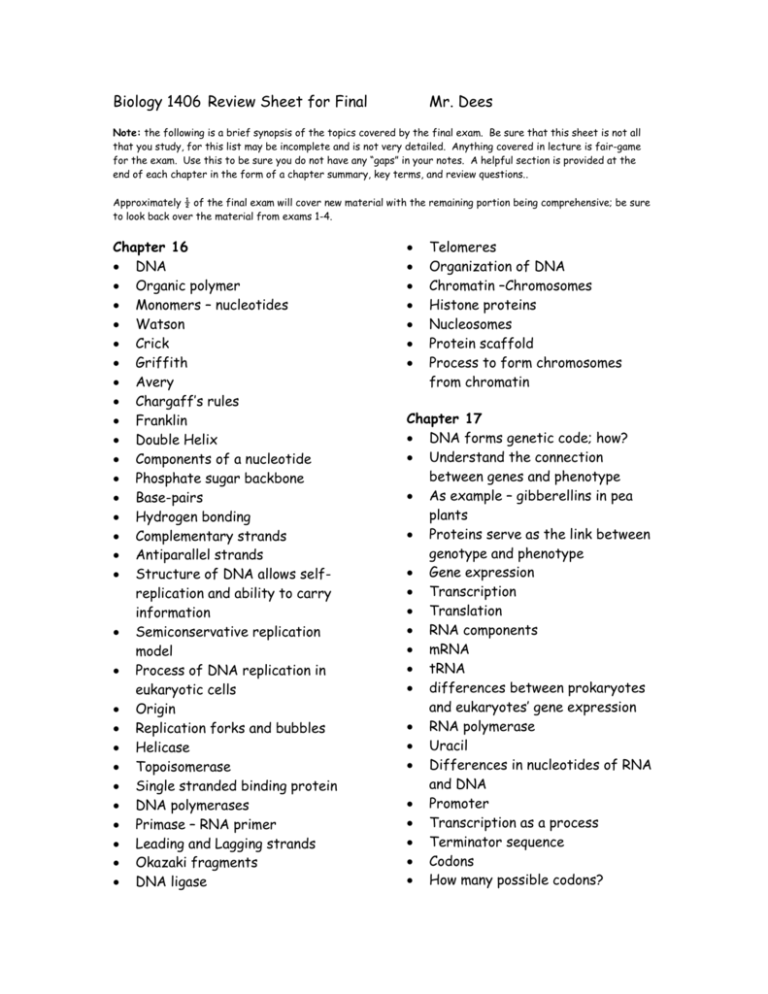Biology 1406
advertisement

Biology 1406 Review Sheet for Final Mr. Dees Note: the following is a brief synopsis of the topics covered by the final exam. Be sure that this sheet is not all that you study, for this list may be incomplete and is not very detailed. Anything covered in lecture is fair-game for the exam. Use this to be sure you do not have any “gaps” in your notes. A helpful section is provided at the end of each chapter in the form of a chapter summary, key terms, and review questions.. Approximately ½ of the final exam will cover new material with the remaining portion being comprehensive; be sure to look back over the material from exams 1-4. Chapter 16 DNA Organic polymer Monomers – nucleotides Watson Crick Griffith Avery Chargaff’s rules Franklin Double Helix Components of a nucleotide Phosphate sugar backbone Base-pairs Hydrogen bonding Complementary strands Antiparallel strands Structure of DNA allows selfreplication and ability to carry information Semiconservative replication model Process of DNA replication in eukaryotic cells Origin Replication forks and bubbles Helicase Topoisomerase Single stranded binding protein DNA polymerases Primase – RNA primer Leading and Lagging strands Okazaki fragments DNA ligase Telomeres Organization of DNA Chromatin –Chromosomes Histone proteins Nucleosomes Protein scaffold Process to form chromosomes from chromatin Chapter 17 DNA forms genetic code; how? Understand the connection between genes and phenotype As example – gibberellins in pea plants Proteins serve as the link between genotype and phenotype Gene expression Transcription Translation RNA components mRNA tRNA differences between prokaryotes and eukaryotes’ gene expression RNA polymerase Uracil Differences in nucleotides of RNA and DNA Promoter Transcription as a process Terminator sequence Codons How many possible codons? How many natural amino acids RNA processing Pre-mRNA Exons Introns Cap and tail Translation as a process Structure of ribosome Anticodons Process of creating a polypeptide GTP Release factor Be sure that you can take a DNA template and create a mRNA molecule and then match the corresponding anticodons of a tRNA molecule Chapter 18&20 Review the organization of DNA Histone acetylation Differential gene expression Biotechnology Cloning processes for bacteria and plants and animals Plasmid Restriction enzyme Recombinant bacterium Dolly the sheep Embryonic and adult stem cells PCR – process and uses Restriction fragments of DNA Electrophoresis Practical uses of Biotechnology Human gene therapy Manufacture of pharmaceutical products Forensics Environmental cleanup Transgenic organisms aka genetically modified organisms (GM) Pharm animals Ethics of genetic manipulation





